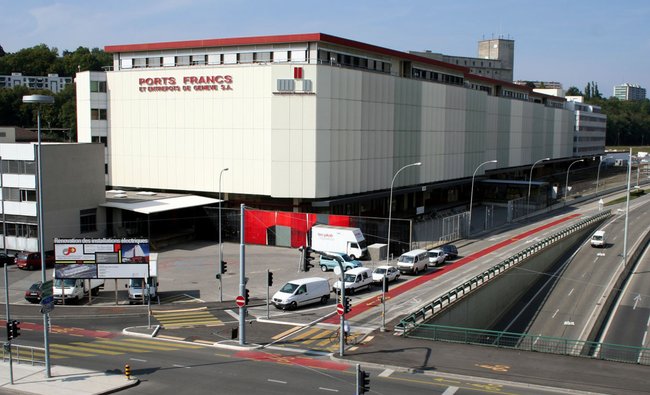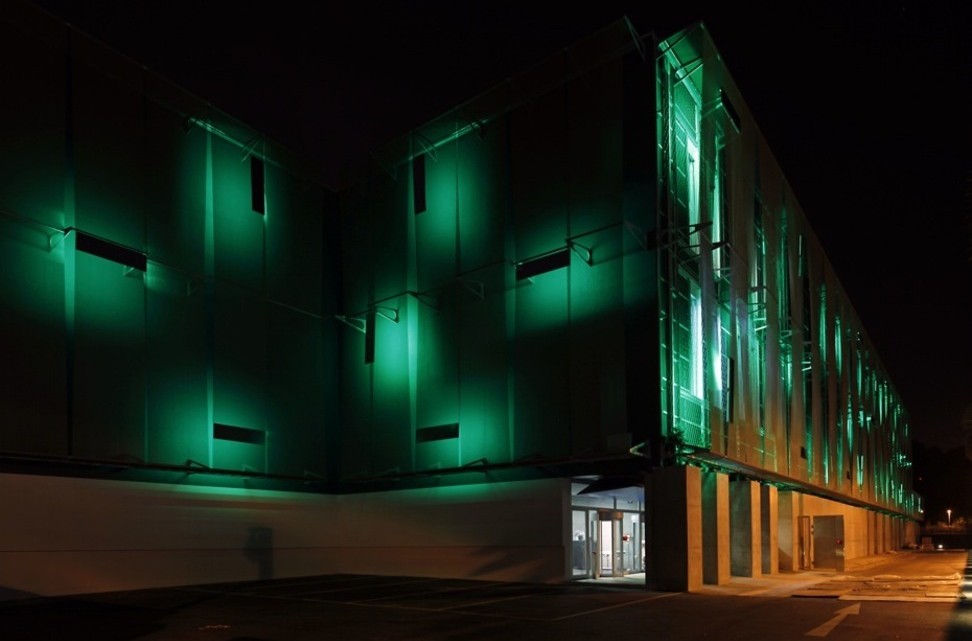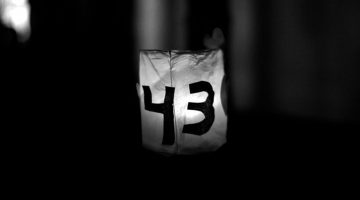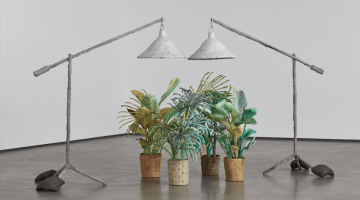Standing around the Parking Lot Art Fair in San Francisco last May, I was surrounded by a variety of artists who showed up by 7 a.m. to claim parking spots to exhibit their art at a pop-up art exhibition staged outside of a bona fide art fair (Art Market San Francisco), taking place at Fort Mason Center nearby. Satellite art fairs are all the rage, but this one was a bit different. There were no dealers presenting artists, no booths, no walls or labels, and no fees paid to the organizers: instead it was a group of artists with no institutional affiliation. The crowd was pretty good on this sunny Saturday, and though the organizers emphasized that nothing could be sold unless an artist acquired a vendor’s permit from the city, transactions were tendered. The spectacle of artists organizing their own makeshift art fair in a parking lot with little prospect of legitimate commerce is a marvelous example of the informal economy at work in the contemporary art world, an economy whose effects have been little considered in the ample discussions of the global art market that have been taking place in the 21st century.
The term “informal economy” was first used by Keith Hart in the 1970s to describe how individuals in developing nations invented new economic devices in order to survive in a world with very few “regular” employment opportunities. Since then, informal economy has been a term employed to describe bottom-up efforts to generate a livelihood among those without secure financial footing in the global economy. It may not be a familiar term, but the concept of the informal economy is not foreign to anyone who has tried to make ends meet as an artist. Edgar Feige has broken down the underground economy into segments: the illegal economy, the unreported economy, the unrecorded economy, and the informal economy. For my purposes, I will use the term informal economy to refer to the last three sections, namely any transaction that is unrecorded, untaxed, and unregulated but not explicitly illegal. This is also described as the “gray market” to distinguish these economic activities from the explicitly illegal “black market.”
This distinction is spurious to a certain degree. While some have estimated the black market to be 20% of the global economy, informal employment makes up half of the world’s jobs, according to the Organisation for Economic Co-operation and Development (OECD).1 While the distinction between illegal and legal business practices may seem clear enough on the face, there is a blending of black markets with gray markets and legitimate—if less regulated—markets such as the art market play a role in this process. The legitimate segment of the art market can be blended into gray and black without detection because there is so much money and art tucked away offshore, beyond regulatory scrutiny. Given the existence of offshore financial mechanisms employed by high-net-worth individuals (HNWIs) who invest in art, it would be difficult for a seller of a work of art to determine whether the money transferred to cover the artwork was “clean” because money launderers are known to employ the tactic of “layering” to hide the origins of assets and blend “dirty” money with legitimate investments. One example directly relevant to the art world is the expanding domain of free ports.
A free port is a storage facility that exists formally outside of the territorial jurisdiction of any country. The Geneva Freeport, the first of its kind, was originally created in 1888 to store grain and other agricultural products in transit. The essential aspect of the free port, according to New York Times reporter David Segal, is the “temporary exemption of taxes and duties for an unlimited period of time”.2 While one cannot store grain for an unlimited period, more valuable commodities such as art and wine (to say nothing of gold bars) could be stored much longer. In the era of offshore expansion in the late 20th century, tax loopholes and secrecy domains acquired a much greater significance in the global economy and, for art, the free port became the physical equivalent of the Swiss Bank account. Invisible to tax authorities, foreign governments and even the insurers of the art works themselves, art could be stored there with complete anonymity and sold without any taxes being paid.

Geneva Freeport. Courtesy of the Internet.
The use of free ports to store art marks a new era in the commoditization of the work of art. It is difficult to imagine a reason to keep artworks in a free port unless there is speculation going on. If you are a collector of fine art, you want to be able to see and to appreciate what you own. But if you are a speculator, all you need is storage since you are betting that the work is going to increase in value. So the free port is the perfect place to park your speculative art purchases because they cannot be traced to you and no government can tax you on these assets. Therefore, if you want to corner the market on the work of a certain artist and wait for it to escalate in value, the free port is your best bet.
In his expansive account of the development of the offshore financial world, Nicholas Shaxson underlines how certain countries, beginning with Switzerland, have regulated financial secrecy as a means to ensure the discretion of the banking industry and to protect assets held in these countries from external regulatory mechanisms.3 Such a governance model is called a “secrecy jurisdiction.” This means that if you made a lot of money that you don’t want to report on your income taxes, you can park it in a secrecy jurisdiction and the tax authorities will not be able to find evidence of fraud because it is against the law for these organizations to report the contents of their accounts to the authorities. This does not mean, of course, that all money in Swiss (or Cayman) banks is the result of ill-gotten gains, but it does mean that no one can ever find out whether it is or not. The same is true for free ports. No one can tell if the art inside was stolen, bought with drug money, or simply a prudent investment expected to yield great returns in time. The secrecy of free ports, combined with the unregulated nature of the art market, means that it is very difficult to connect owners with works of art that are stored in a free port. No government can regulate, tax, or investigate property stored inside a secrecy jurisdiction, and so, for all intents and purposes, the art in free ports becomes invisible. Like an offshore financial center, the exclusive high-end domain of the art market is a secrecy domain, and in that world an informal economy thrives.
Yves Bouvier is an excellent example. As the owner of Natural Le Coultre, which runs the Geneva, Luxembourg, Monaco, and Singapore free ports, he is heavily invested in tax-free secrecy jurisdictions, but a recent scandal has exposed the nature of his business practices. In February 2015, he was indicted for money laundering in Monaco in relation to a deal he brokered for the Russian oligarch Dmitry Rybolovlev. The accusations, denied by Bouvier and as yet unproven, involve a gap in price between the buyer and seller of a Picasso painting that Bouvier brokered. It is certainly not the first money laundering accusation in the art world but the domain of private dealers and intermediaries is a secretive one and any problems are rarely aired in public. While such an accusation is rare, it also exposes the practice of carefully planned negotiations for high-end artistic merchandise that happens outside of the media spotlight and the attention of regulatory agencies and tax authorities. My point is not that anyone involved with free ports is involved in shady business deals, but that much of the top end of the art market is already an informal economy existing beyond regulatory oversight and the players make their own rules since there is no regulatory body overseeing international art transactions.
Considering how the art market has evolved in conjunction with globalization, there has been a clear expansion of cross-border exchange of artworks. As the gap between national regulation and international commerce widens, so does the opportunity for criminal elements to engage in otherwise legitimate forms of exchange. Because it is formed by international commerce, the art market has embraced the globalization of finance and adopted elements of the offshore financial system. The result is that there is a burgeoning art economy that is invisible, undetectable, and so far unmeasured. There is no telling just how large a portion of the art market the offshore system hides.

Luxembourg Freeport. Courtesy of the Internet.
It is not so difficult then to imagine how free ports allow artworks to be layered into the gray market, but authors who examine the informal economy and offshore finance have also noted that legitimate enterprises sometimes subcontract with informal enterprises in order to make their bottom line and we can find this dynamic in the global art world as well. The sharing economy has brought us more than just Airbnb and Uber—there are also websites that facilitate art auctions and private art sales, and international art fairs also allow many opportunities to skirt national regulations for private actors. Further, artists are the perfect demonstration of an informal labor pool, performing work at home and thereby evading workplace regulations, consigning and sometimes selling their product without a formal contract, and working on the margins of the formal economy.
The informal economy in the art world is not only a series of shady business deals—though it does include this category—but it is also a way that the distant and objective art market is personalized and made immediate. It is both a symptom of the shrouded financial transactions of the offshore economy and it is a salve to soothe the wounds that capitalism inflicts on those whose labor eschews its financial logic. Artists, curators, and non-profit directors, among others, work for free because they want recognition and they want to participate in a public conversation, but also because they do not want their labor to be monetized. Their actions provide a surplus that cannot be quantified and the rewards they receive for doing so are not the kind of thing you can claim on a tax form. Despite being tied to the economic structures that govern the rest of the world, and needing to earn a living, various actors in the art world—artists first among them—participate in a shadow economy where monetary value is not the ultimate goal or the arbiter of reality. They both participate in and reinvent the art market to suit their own needs and as a means to realize their own desires.
So the market for art is no simple thing. Though it is being measured with more precision than ever before, there are so many immeasurable transactions that what we think of as the art market is only a passing glance at what actually exists. It is quite possible that the scale of the informal art market is equal to or greater than the market that is recorded by cultural economists. Certainly, there are market manipulations that are invisible to the general public, if more accepted within a smaller coterie of participants. But there are also uncalculated domains of financial exchange, sales that are off the books, and generous contributions to the development of the aesthetic dimension of the human spirit that could never be quantified. What did it cost to put on the Parking Lot Art Fair? Ostensibly nothing, but that labor and those transactions, immaterial and otherwise, count for more than we might at first imagine. If all the artists and other art world actors who perform labor for free were to bill for these services, how much would it come to? This is a question that no economist can answer with any precision.
1) Gilman, Goldhammer and Weber (eds.), Deviant Globalization: Black Market Economy in the 21st Century (New York and London: Continuum, 2011).
2) David Segal, “Swiss Freeports are Home for a Growing Treasury of Art”, New York Times (July 21, 2012).
3) Nicholas Shaxson, Treasure Islands: Uncovering the Damage of Offshore Banking and Tax Havens (New York: Palgrave MacMillan, 2011).



